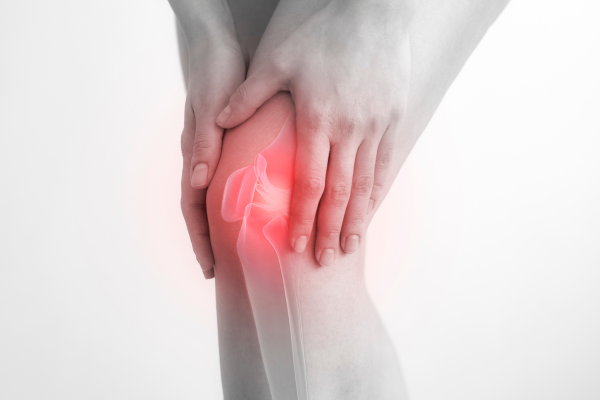Knee Replacement
Knee replacement, also known as knee arthroplasty or total knee replacement, is a surgical procedure to reconstruct a knee damaged by arthritis. Metal and plastic parts are used to connect the ends of the bones that make up the knee joint to the knee cap. This surgery may be considered for someone with severe arthritis or a severe knee injury.

𝗧𝘆𝗽𝗲𝘀 𝗼𝗳 𝗞𝗻𝗲𝗲 𝗥𝗲𝗽𝗹𝗮𝗰𝗲𝗺𝗲𝗻𝘁
There are two main types:
- Total Knee Replacement:- Total knee replacement, where the entire joint is replaced with artificial surfaces.The orthopedic surgeon makes an incision (cut) in the knee and moves the patella (knee cap) to the side.
- Partial Knee Replacement:- where only one damaged compartment of the knee is replaced. Partial knee replacement surgery is also called unicompartmental knee arthroplasty or unicondylar knee arthroplasty.
𝗖𝗮𝘂𝘀𝗲𝘀 𝗼𝗳 𝗞𝗻𝗲𝗲 𝗿𝗲𝗽𝗹𝗮𝗰𝗲𝗺𝗲𝗻𝘁
- Pain is present throughout the day, even at rest.
- Your knees are stiff and swollen.
- Walking, getting up, or climbing stairs is difficult and painful.
- Medication and therapy may not provide adequate relief.
- The knee cartilage is so damaged and worn that you walk "on the bone," in which the bones of the joint are scraped together.
𝗦𝘆𝗺𝗽𝘁𝗼𝗺𝘀 𝗼𝗳 𝗞𝗻𝗲𝗲 𝗥𝗲𝗽𝗹𝗮𝗰𝗲𝗺𝗲𝗻𝘁
- Pain
- Loose implant particles
- Knee instability
- Infection
𝗣𝗿𝗲𝗰𝗮𝘂𝘁𝗶𝗼𝗻 𝗮𝗳𝘁𝗲𝗿 𝗸𝗻𝗲𝗲 𝗿𝗲𝗽𝗹𝗮𝗰𝗲𝗺𝗲𝗻𝘁 𝘀𝘂𝗿𝗴𝗲𝗿𝘆
- Safety handrails in the shower or bath.
- Long-handled sponge and shower hose
- Dressing stick
- Sock aid
- Proper handrails along all stairs
- Long-handled shoe horn
- Reaching stick to grab objects
- Removing loose carpets and electrical cords that may cause you to trip.
- Raised toilet seat.
- Avoiding stair-climbing until recommended by your doctor.
𝗥𝗲𝗰𝗼𝘃𝗲𝗿𝘆 𝗧𝗶𝗺𝗲
It usually takes about a year to fully heal after a knee replacement. But you should be able to resume most of your normal activities six weeks after surgery.
Your surgeon will provide you with a personalized recovery plan, you should do something at home for recovery like
- Icing your knee a few times a day for 20 minutes.
- You can prop it up on mattresses or pillows when you're lying down, or rest it on a footrest if you're sitting in a chair.
- Keep your incision clean and covered
- Home exercises.
- Physical therapy.
𝗥𝗶𝘀𝗸 𝗮𝗻𝗱 𝗰𝗼𝗺𝗽𝗹𝗶𝗰𝗮𝘁𝗶𝗼𝗻
- Bleeding
- Infection
- Blood clots in the legs or lungs
- Loosening or wearing out of the prosthesis
- Fracture
- Continued pain or stiffness.
𝗗𝗶𝗮𝗴𝗻𝗼𝘀𝗶𝘀 𝗼𝗳 𝗞𝗻𝗲𝗲 𝗥𝗲𝗽𝗹𝗮𝗰𝗲𝗺𝗲𝗻𝘁
- A Physical examination to make sure you are healthy enough for surgery.
- Blood tests.
- An electrocardiogram to check your heart health.
- Dental examination to reduce the risk of developing an infection after surgery.
- Imaging tests, including a knee X-ray. You might also need magnetic resonance imaging (MRI) or a computed tomography (CT) scan.
